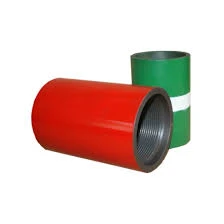- Afrikaans
- Albanian
- Amharic
- Arabic
- Armenian
- Azerbaijani
- Basque
- Belarusian
- Bengali
- Bosnian
- Bulgarian
- Catalan
- Cebuano
- Corsican
- Croatian
- Czech
- Danish
- Dutch
- English
- Esperanto
- Estonian
- Finnish
- French
- Frisian
- Galician
- Georgian
- German
- Greek
- Gujarati
- Haitian Creole
- hausa
- hawaiian
- Hebrew
- Hindi
- Miao
- Hungarian
- Icelandic
- igbo
- Indonesian
- irish
- Italian
- Japanese
- Javanese
- Kannada
- kazakh
- Khmer
- Rwandese
- Korean
- Kurdish
- Kyrgyz
- Lao
- Latin
- Latvian
- Lithuanian
- Luxembourgish
- Macedonian
- Malgashi
- Malay
- Malayalam
- Maltese
- Maori
- Marathi
- Mongolian
- Myanmar
- Nepali
- Norwegian
- Norwegian
- Occitan
- Pashto
- Persian
- Polish
- Portuguese
- Punjabi
- Romanian
- Russian
- Samoan
- Scottish Gaelic
- Serbian
- Sesotho
- Shona
- Sindhi
- Sinhala
- Slovak
- Slovenian
- Somali
- Spanish
- Sundanese
- Swahili
- Swedish
- Tagalog
- Tajik
- Tamil
- Tatar
- Telugu
- Thai
- Turkish
- Turkmen
- Ukrainian
- Urdu
- Uighur
- Uzbek
- Vietnamese
- Welsh
- Bantu
- Yiddish
- Yoruba
- Zulu
api 5ct tubing coupling
API 5CT Tubing Coupling Essential Component for Oil and Gas Operations
In the oil and gas industry, maintaining the integrity and efficiency of drilling and production operations is crucial. A key component that plays a vital role in these processes is the API 5CT tubing coupling. Designed in accordance with the American Petroleum Institute (API) specifications, these couplings provide reliable connections between segments of tubing that are used to transport fluids from beneath the earth's surface to the surface facilities.
API 5CT Tubing Coupling Essential Component for Oil and Gas Operations
One of the primary benefits of API 5CT couplings is their standardized dimensions and specifications; this facilitates easier installation and interchangeability among various components in the drilling operation. The couplings are available in different steel grades, allowing operators to select the appropriate strength for specific applications, whether for conventional drilling or for the more challenging conditions encountered in deepwater or high-temperature environments.
api 5ct tubing coupling

There are two primary types of couplings employed in the oil and gas sector flush joint couplings and upset joint couplings. Flush joint couplings offer a smooth external profile, reducing the chances of getting stuck during drilling operations, while upset joint couplings come with thicker necks, providing enhanced strength and resistance to deformation under load. These features enable operators to choose the best coupling for their specific drilling needs.
Moreover, the manufacturing of API 5CT tubing couplings follows stringent quality control processes, which include both mechanical and non-destructive testing. This ensures that every coupling meets the necessary safety and performance standards, providing peace of mind for operators.
In conclusion, API 5CT tubing couplings are essential components in the oil and gas industry, facilitating effective connections between tubing sections. Their standardized specifications, combined with superior strength and reliable performance, make them indispensable in ensuring the safety and efficiency of drilling and production operations. As the industry continues to evolve, the importance of such high-quality components remains ever more pertinent, driving innovations and improvements in operations worldwide.
-
Tubing Pup Joints: Essential Components for Oil and Gas OperationsNewsJul.10,2025
-
Pup Joints: Essential Components for Reliable Drilling OperationsNewsJul.10,2025
-
Pipe Couplings: Connecting Your World EfficientlyNewsJul.10,2025
-
Mastering Oilfield Operations with Quality Tubing and CasingNewsJul.10,2025
-
High-Quality Casing Couplings for Every NeedNewsJul.10,2025
-
Boost Your Drilling Efficiency with Premium Crossover Tools & Seating NipplesNewsJul.10,2025







